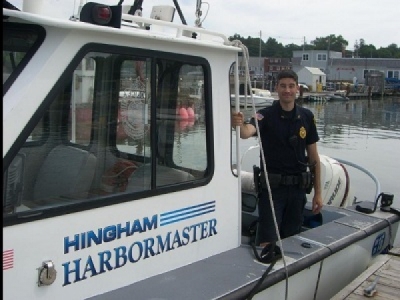
Posted on July 3, 2018
By Carol Britton Meyer, Hingham
Hingham Harbor has to be closely monitored because it has tidal flats on three sides. The tidal flow carries silt into deeper areas, causing a buildup at the harbor entrance and making the water too shallow for some boats.
Hingham Harbor is dredged roughly every 10 years to maintain adequate water depths within the anchorage basin for continued safe navigation during all tidal cycles.
Prior dredgings occurred in 1959, 1985-86, 1996-97, and in 2009-2010. (Records don’t show further dredgings, if any, that took place between 1959 and 1986.) That means the next one is due around 2019, when an estimated 63,898 cubic yards of sediment will be removed.
When the harbor was dredged 10 years ago, 87,600 cubic years were removed, and 145,000 cubic yards during the two prior dredging periods.
Hingham Harbor has to be closely monitored because it has tidal flats on three sides. The tidal flow carries silt into deeper areas, causing a buildup at the harbor entrance and making the water too shallow for some boats.
The dredging window is from Oct. 1 to Feb. 1 due to fish spawning and other issues, so planning should begin now, according to consultant Christine Player of Foth CLE-Engineering Inc. of Marion, Mass., who recently presented the Harbor Development Committee with a proposed maintenance dredging program.
“That way the town could solicit public bids April to May [2019] so the work could begin starting October 1 of that year,” she said, “because the timeframe could be shortened by a tough winter.
“Getting the work accomplished in one construction cycle is important because going into another season the following year would require the expensive hiring of more equipment. This work involves a unique skill set,” Player said. “There’s a lot of competition [for the skills required].”
Foth/CLE completed a hydrographic survey of the existing mooring basin and the immediate surrounding area on March 28.
The estimated cost for Phase 1 is $169,625 and $4.9 million for phase 2 — for a total of roughly $5.09 million including contingency funding for both phases. Phase 1, which involves planning, engineering, permitting, final design and bid documents, etc. takes about a year. Phase 2 is the construction stage. The cost to remove the sediment to an offsite disposal area is $55 a cubic yard.
“We should have enough money in our dredging fund for the first phase,” Harbormaster Ken Corson said recently during a Harbor Development Committee conversation about the project.
Other funding sources could include potential state grants, money through a Town Meeting appropriation, or other local sources. More information about financing will be available at a later date.
“My recommendation is for us to get serious about the project and to get it shovel-ready,” Corson said. “My goal is to get the dredging done and then the boat ramp [which is expected to be paid for by the state].”
Delaying the project would only worsen the situation, he said. Any contract requires the selectmen’s signature. Based upon the Foth/CLE presentation, the Harbor Development Committee recently voted in favor of recommending that the town proceed with Phase 1 of the harbor dredging project in order to develop plans that would ready Hingham for potential state funding.
Source: Hingham





